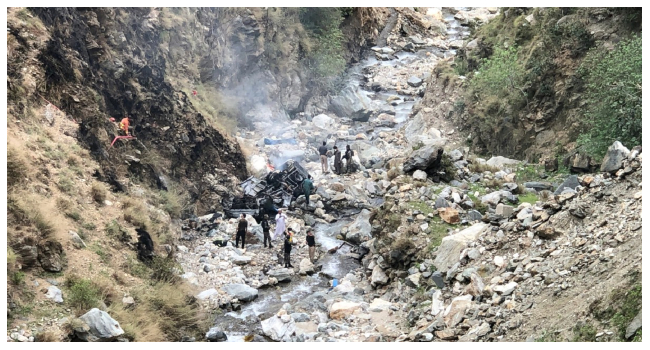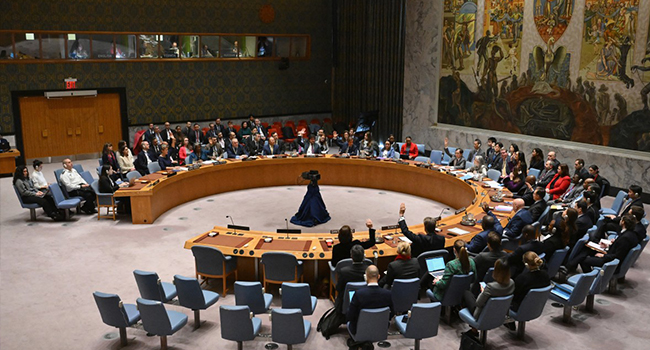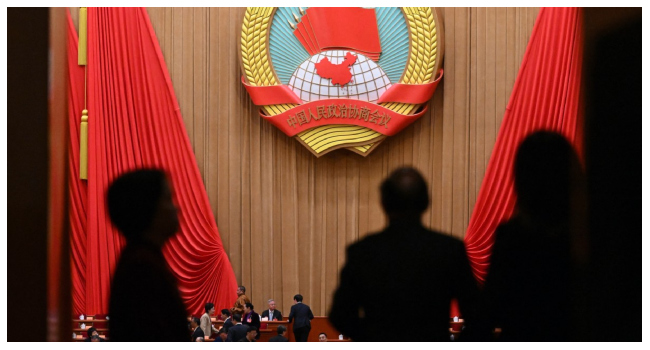
Soldiers from the Chinese People’s Liberation Army briefly left their Hong Kong barracks on Saturday to help the clean-up after a week of violence and disruption caused by pro-democracy protests, a rare and highly symbolic movement in a city lurching deeper into crisis.
The action saw scores soldiers from the garrison, which is confined to the barracks under Hong Kong’s mini-constitution, with crewcuts and identical gym kits conduct a lightning-quick removal of bricks and debris near their base.
The PLA confirmed the brief deployment in a Weibo post late Saturday explaining the men helped open a debris-strewn road outside their Kowloon Tong barracks to traffic, winning “applause from residents” in the process.
The last time soldiers left the barracks was 2018 to help clean up after a typhoon battered the city.
Their appearance on Saturday raised tensions in a city rocked by a week of intensified violence and chaos, which prompted China’s President Xi Jinping to warn the “one country, two systems” model governing Hong Kong was being jeopardised by the protests.
Semi-autonomous Hong Kong enjoys more freedoms than the mainland, although many feel those liberties are being chipped away.
Article 14 of the Basic Law — Hong Kong’s mini-constitution since its handover from Britain to China in 1997 — allows the local government to request help from PLA garrisons in the city in the event of a public order breakdown.
But political analyst Dixon Sing said the PLA’s cameo “sends a subtle message that China is behind” the government.
“It also gives a hint to the protesters… that if things really turn sour, China can still use the PLA in a more naked manner,” he added.
Chinese media has waged a propaganda war against Hong Kong’s protest movement describing them as “rioters” causing wanton damage to the city of 7.5 million.
Television footage showed a soldier with video camera following the group as they got to work.
The protests, which started against a now shelved bill to allow extradition to China but have billowed out into wider calls for democracy, have entered their sixth month.
Two people have died this month as the violence worsened, while the financial hub has been pushed into a recession by the turmoil.
Divided city
Protesters have launched a “Blossom Everywhere” campaign of roadblocks, vandalism and protest across the city.
That shut down large chunks of the train network, forced schools and shopping malls to close and stretched police resources this week.
The city remains strewn with debris, barricades and scarred by scorch marks from petrol bombs thrown during clashes between police and protesters.
Meanwhile universities have emerged as bases for a movement previously defined by its fluid, unpredictable nature with stockpiles of weapons and supplies.
Hong Kong is a city divided and reactions to the movement from inside the PLA garrison reflected that schism.
A woman in her 50s who gave her name only as Lee applauded the clean up effort near the Kowloon Tong PLA base, saying it felt “so good” to see them.
“How did a Hong Kong that was doing just fine become like this?” she added.
But pro-democracy protesters, who remained in the streets as night fell, read the hour-long action from the barracks as a warning.
“We don’t touch them (the PLA barracks) we don’t know what kind of weapons they have and their mindset is also different from Hong Kong police” said a 24-year-old student protesters who identified himself by the surname Leung.
Arguments and scuffles also broke out on Saturday between pro-government and pro-democracy activists during clean-ups across the city.
At the Hong Kong Polytechnic University in Kowloon, student protesters insisted they wanted to maintain an occupation of the campus and keep control of one of the major tunnels to Hong Kong Island.
The Cross Harbour Tunnel has been closed since Tuesday, its toll booths torched and piles of rubble laid across the road.
“We are here for the long term,” a 20-year-old student who identified himself only as E said.
What comes next in a leaderless movement characterised by innovation and increasing violence is uncertain.
Another 21-year-old student who identified herself as Mario said they intended to continue the protest action which closed schools, train lines, businesses and brought white collar workers to the streets into next week.
“That’s how I fell but… in this movement everyone is an individual, there’s no way to ensure that everyone’s thinking the same thing,” she said.
Earlier on Saturday morning a group of around 500 people, mostly middle-aged and senior citizens, rallied outside the Hong Kong government’s headquarters to show support for the police, who have been heavily criticised over their handling of the crisis.
AFP




